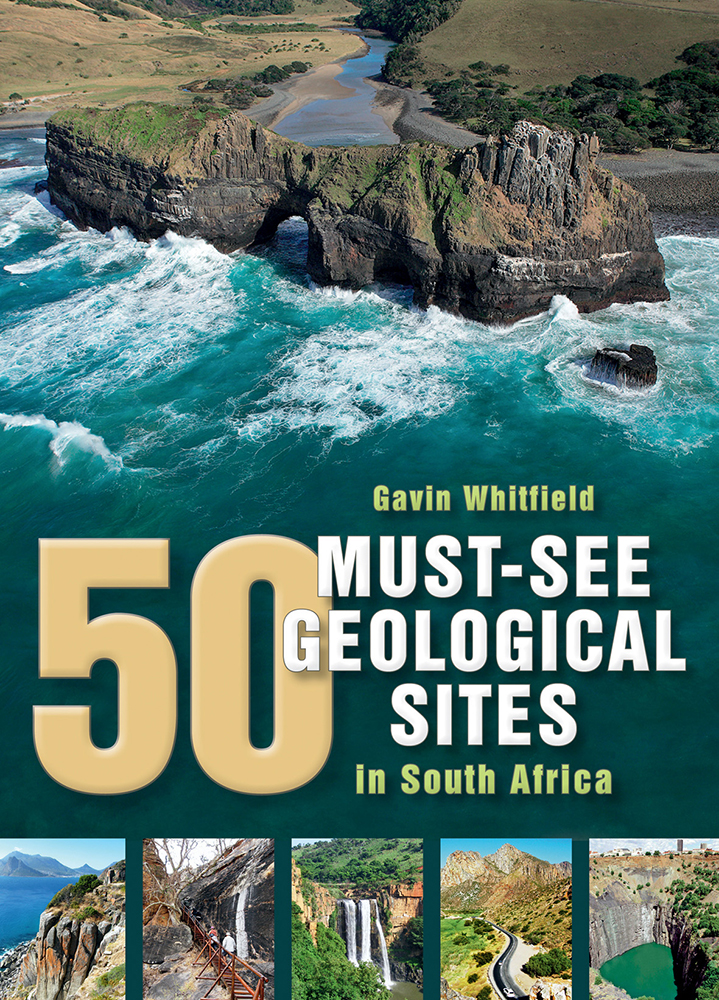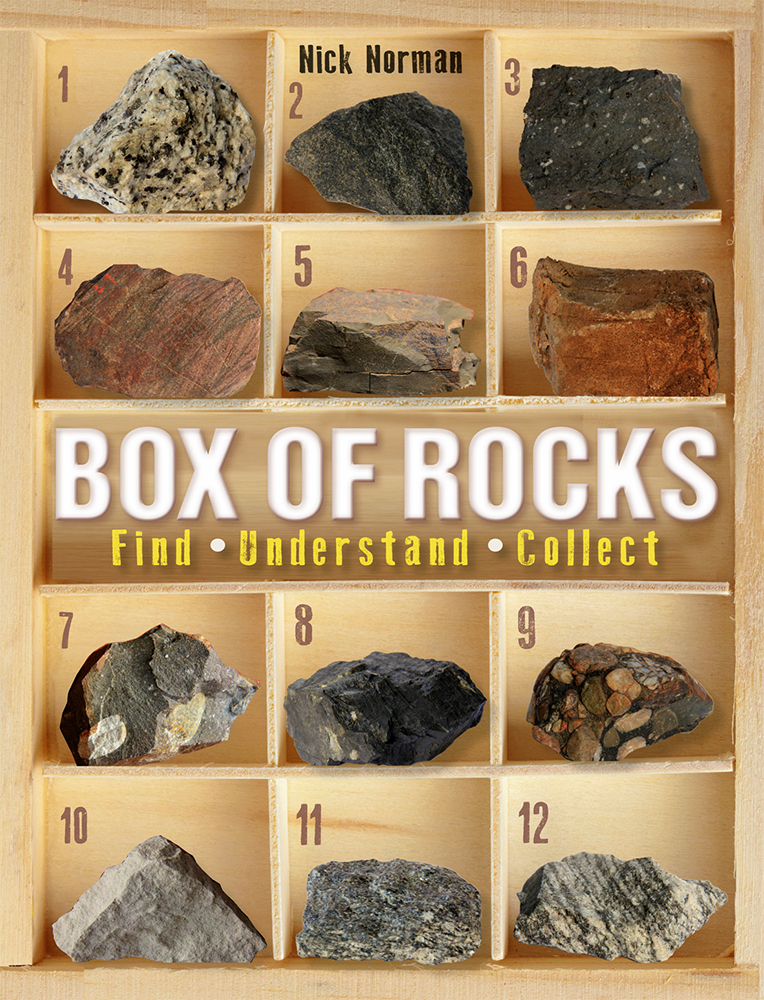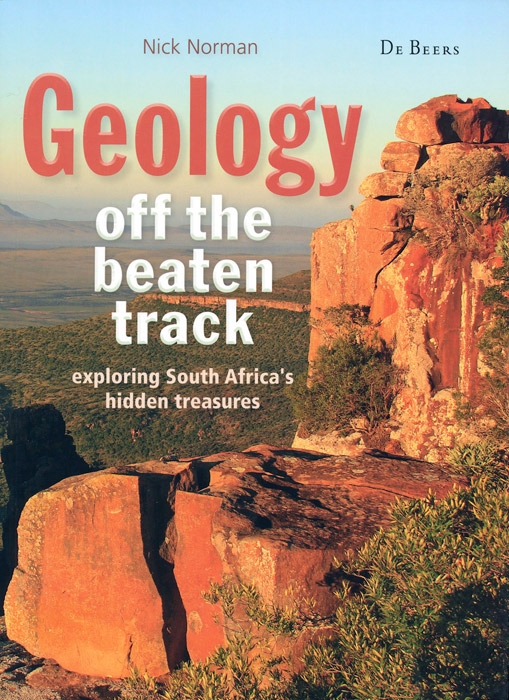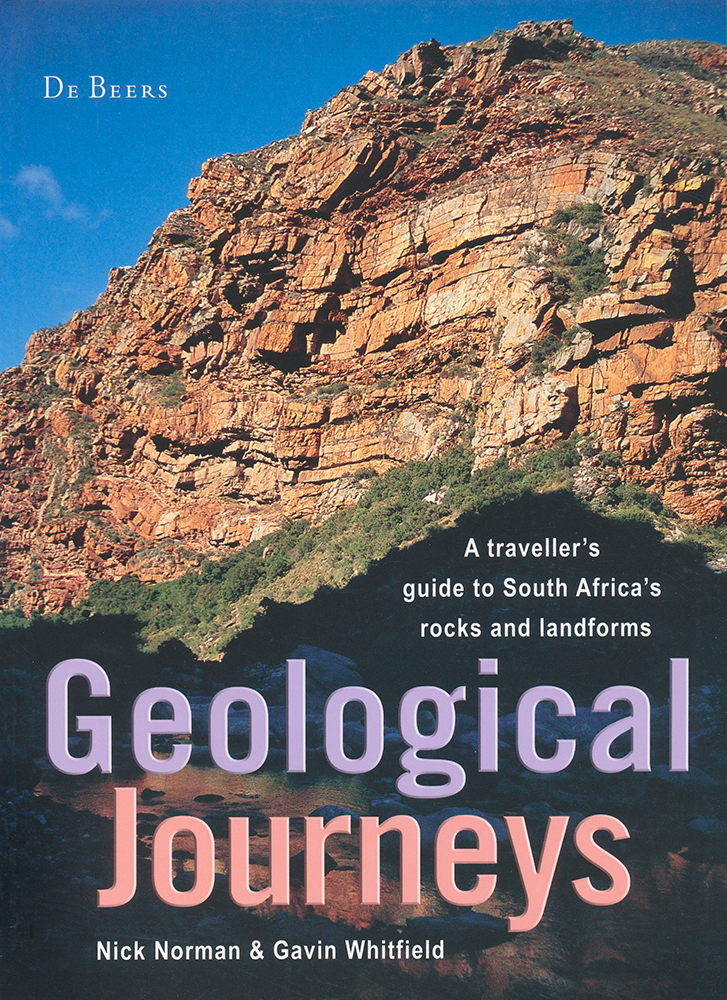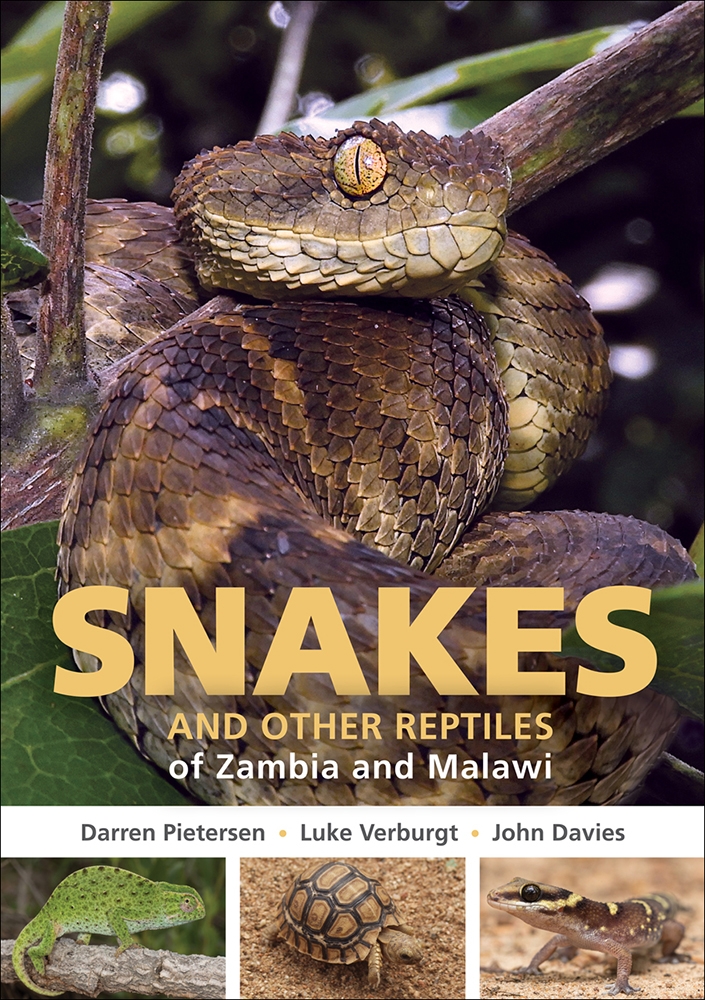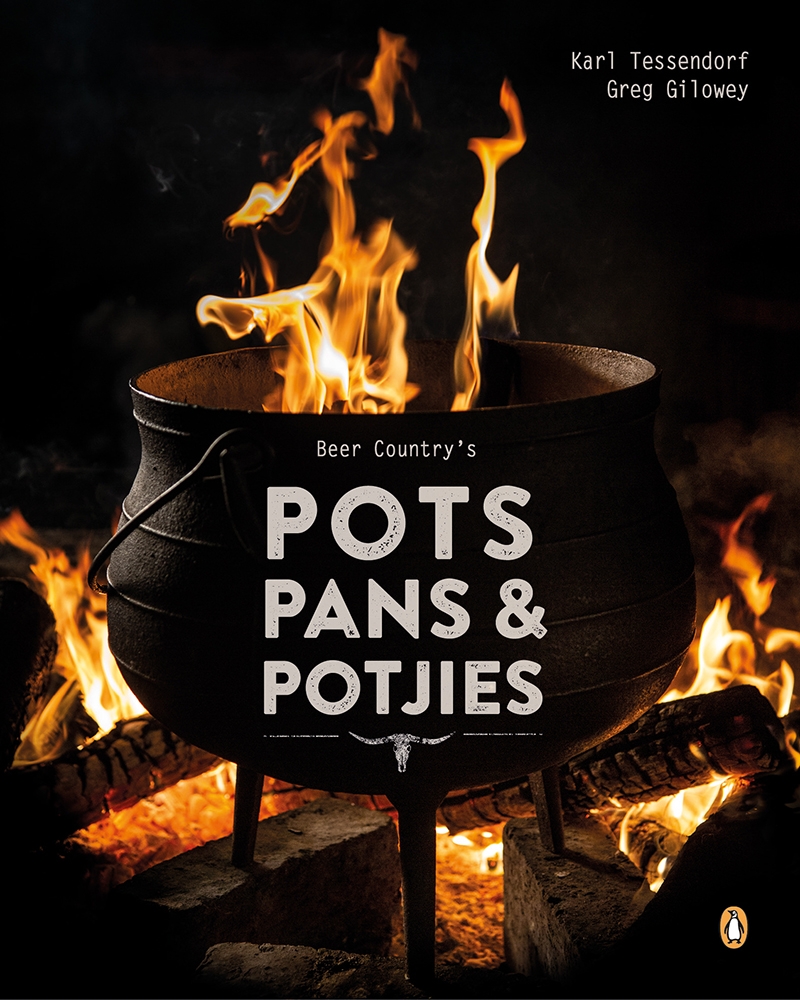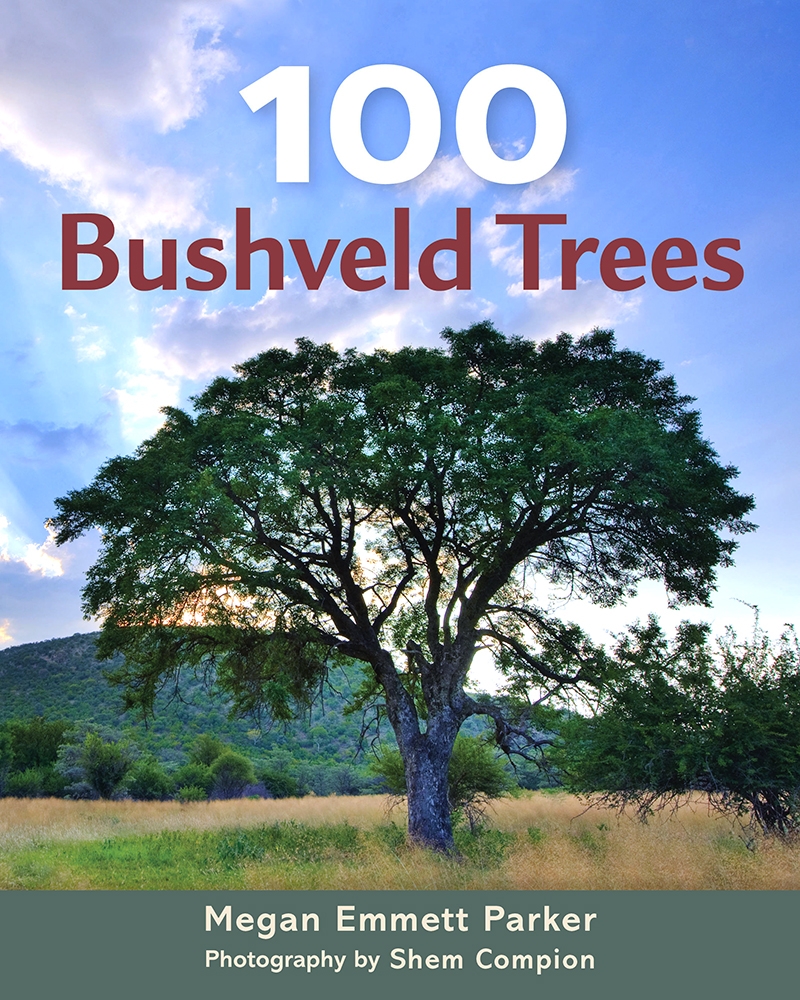Geological Journeys. A Traveller’s Guide to South Africa’s Rocks and Landforms, by Nick Norman and Gavin Whitfield
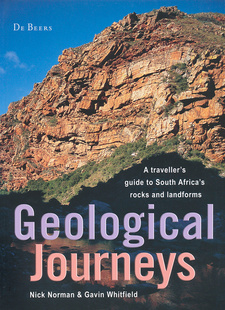
Geological journeys. A traveller’s guide to South Africa’s rocks and landforms
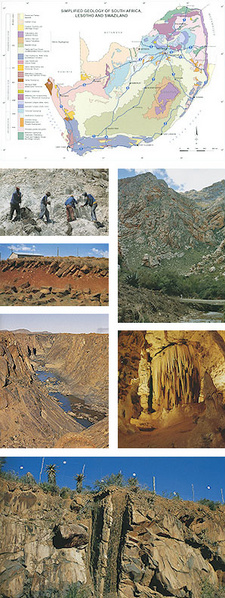
Geological Journeys. A Traveller’s Guide to South Africa’s Rocks and Landforms, by Nick Norman and Gavin Whitfield. ISBN 9781770070622 / ISBN 978-1-77007-062-2
Nick Norman and Gavin Whitfield describe Greater Cape Town and environs with a geological overview: Most of the lower slopes around the Cape Peninsula are shaped from either granite of the Cape Suite or the formations the granite magma was intruded into, which are folded and metamorphosed sedimentary rocks of the Malmesbury Group.
These are the most ancient rocks you’ll see here, and form the basement of this region. For about 20 million years after the granite intrusion (some 540 million years ago), the high ‘Malmesbury’ mountains and granites were gradually reduced by erosion to an almost flat surface, before the next cycle of sedimentation began. Then, slowly, meandering rivers dropped their load of sand in deltas and along the beaches of a shoreline very different from what we see today. The formation of the Cape Supergroup had begun. For the most part subsidence of the basin kept pace with the supply of sediment and the environment was one of long-lived stability. Around 250 million years ago - and about 50 million years after the Cape sedimentation had ended - great welts of crust were seized by convulsions as the Cape Fold Belt was born. But like the peaceful eye in the hurricane, a small area around Cape Town was spared and the magnificent folds seen north and east of the Peninsula are missing in the centre. The new generation of Fold Mountains shed their detritus into the Karoo basin to the north for 70 million years, until crustal stretching began and vast tracts of Gondwana were covered by the floods of Drakensberg basalt that surged up the tensional fissures. On went the stretching, and Gondwana fragmented, as first the proto-Indian Ocean opened up and then the proto-Atlantic Ocean, 125 million years ago. New rivers joined primeval ancestors to breach coastlines never seen before; new base levels were formed, and a landscape that would be moulded to the shapes we know.
Places of geological interest within the Cape Peninsula:
The best way to see the rich panorama of geology that Cape Town offers is by making a tour of the Peninsula. We suggest you follow a clockwise route, approaching Muizenberg from the north, and from there heading towards Cape Point. But first you need to visit Table Mountain, the iconic symbol of Cape Town, arguably South Africa’s most visited geological site, and a declared World Heritage Site. (The mountain’s geological evolution is summarised on the opposite page.) In Muizenberg, where the road gets down close to the beach, here and there you will see scattered outcrops breaking through the beach sand; this is the same Peninsula Formation sandstone that makes up the bastion of Table Mountain (geosite 1, map 2). It persists until near Simon’s Town, where you might notice that the beach rock is reminiscent of the beach outcrops at Clifton on Sea.
How Table Mountain came to be:
Table Mountain and its attendant range form an excellent example of a residual mountain. Four major formations are involved: the earliest are steeply dipping dark grey slate and sandstone of the Malmesbury Group that underlie much of Cape Town’s city centre. Coarse-grained Cape Granite that intruded these rocks around 540 million years ago is seen as bare, rounded outcrops below Lion’s Head and on many beaches. The horizontal overlying Table Mountain Group consists of about 50 m of reddish sandstone and shale of the Graafwater Formation, followed by a 500 m-thick sequence of light grey sandstone of the Peninsula Formation, which make up tne higher mountains and major cliff faces of Table Mountain and extend as far south as Cape Point. Now connected to the mainland, 25 million years ago these mountains existed as an island.e dolerite is fine-grained, mainly because the dyke is so thin (see p. 14). [...]
This is an extract from the book: Geological Journeys. A Traveller’s Guide to South Africa’s Rocks and Landforms, by Nick Norman and Gavin Whitfield.
Title: Geological Journeys. A Traveller’s Guide to South Africa’s Rocks and Landforms
Authors: Nick Norman; Gavin Whitfield
Struik Publishers
Cape Town, South Africa 2006
ISBN 9781770070622 / ISBN 978-1-77007-062-2
Paperback, 18x24 cm, 320 pages, throughout colour photos, several maps
Norman, Nick und Whitfield, Gavin im Namibiana-Buchangebot
50 must-see geological sites in South Africa
50 Must-See Geological Sites presents geologically interesting sites to visit and see in South Africa.
Box of rocks: Beginner's guide to South African Geology
Kept simple and well illustrated, Box of rocks: Beginner's guide to South African Geology, is desinged for the young Geologist and rock collector.
Geology off the beaten track. Exploring South Africa's hidden treasures
Geology off the beaten track introduces geological sites and treasures beyond the major routes across South Africa.
Geological journeys. A traveller’s guide to South Africa’s rocks and landforms
Geological Journeys: a traveller’s guide to South Africa’s rocks and landforms is an essential companion for car journeys.
Weitere Buchempfehlungen
Snakes and other Reptiles of Zambia and Malawi
Snakes and other Reptiles of Zambia and Malawi is a comprehensive field guide, the first of its kind for the region.
Beer Country's Pots, Pans and Potjies
A great recipe and cookbook, Beer Country’s Pots, Pans & Potjie introduces to cast-iron cooking South African style.
100 Bushveld Trees
100 Bushveld Trees introduces to memorable trees found across the northern and eastern regions of South Africa, encompassing both the Highveld and the Lowveld.

